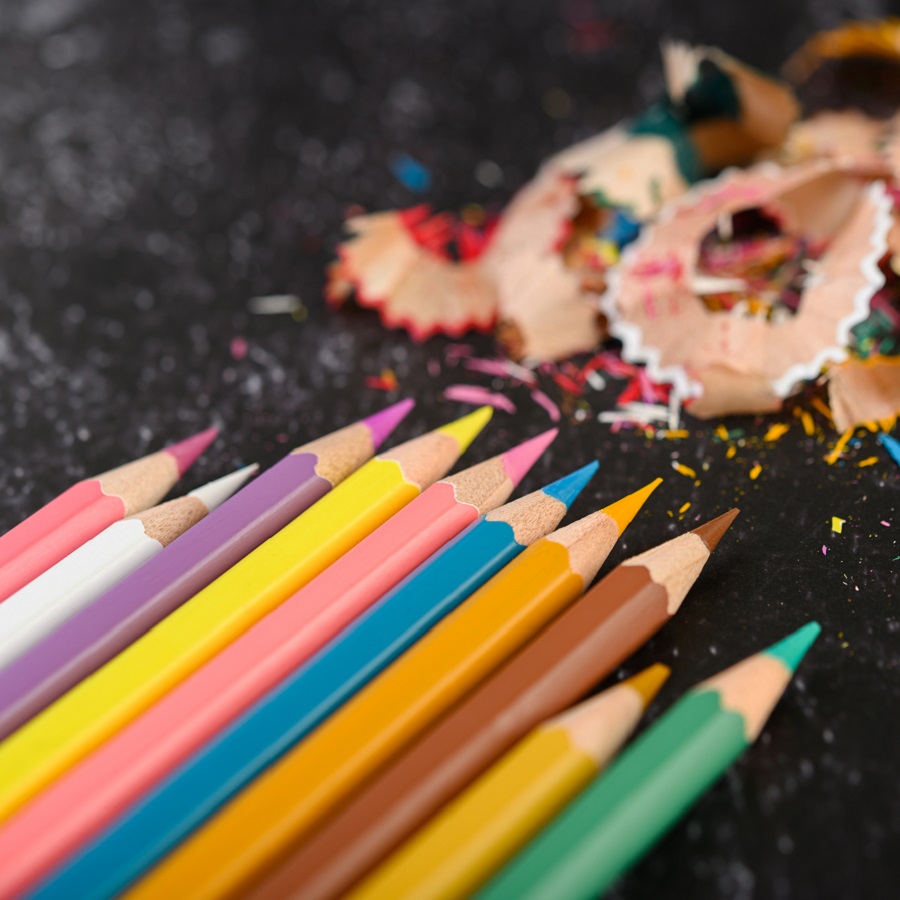Colored pencils are a staple in the world of art and creativity, offering a versatile and accessible medium for both budding artists and seasoned professionals. This guide delves into the components, types, and applications of colored pencils, providing valuable insights for anyone looking to enhance their artistic endeavors.
The Composition of Colored Pencils
Understanding the composition of colored pencils can help artists make informed choices about their materials. Here we dissect the key components that make up these colorful tools:
-
Pigments

-
Pigments are the essence of colored pencils, providing the vivid array of colors artists rely on. These pigments can be derived from natural minerals or synthetically produced. Natural pigments, such as ochre, carbon black, and limestone, are extracted from the earth, offering earthy and muted tones. Synthetic pigments, on the other hand, are manufactured through chemical processes, allowing for a broader spectrum of vibrant colors. For more on pigments, visit
Pigment Information
.
-
Pigments are the essence of colored pencils, providing the vivid array of colors artists rely on. These pigments can be derived from natural minerals or synthetically produced. Natural pigments, such as ochre, carbon black, and limestone, are extracted from the earth, offering earthy and muted tones. Synthetic pigments, on the other hand, are manufactured through chemical processes, allowing for a broader spectrum of vibrant colors. For more on pigments, visit
-
Fillers
- Fillers play a crucial role in giving colored pencils their texture and hardness. Common fillers include wax and talc, which help in reducing pigment costs while ensuring the pencil maintains its structural integrity. Fillers also affect how the pencil applies to paper, contributing to the overall drawing experience.
-
Binders
- Binders are responsible for holding the pigments and fillers together. Typical binders include glycerin esters, waxes, and resins. The type of binder used can significantly influence the quality of the colored pencil, affecting its smoothness and durability. High-quality binders ensure that the pencil lays down color evenly and lasts longer.
-
Wooden Casing
-
The wooden casing not only protects the pencil’s core but also provides a comfortable grip for the user. Commonly used woods include basswood, poplar, and cedar, each offering different levels of ease in sharpening and handling. For an in-depth look at wood types, check
Wood for Pencils
.
-
The wooden casing not only protects the pencil’s core but also provides a comfortable grip for the user. Commonly used woods include basswood, poplar, and cedar, each offering different levels of ease in sharpening and handling. For an in-depth look at wood types, check
The Different Types of Colored Pencils
Colored pencils come in several varieties, each suited for different artistic needs and preferences. Here are the main types:
-
Oil-Based Colored Pencils
- Oil-based colored pencils are known for their intense, rich colors and a certain waxy texture that can create unique textures. They are excellent for blending and layering, making them a favorite among those who appreciate bold, vibrant artwork. However, they are less forgiving when it comes to erasing and may resist multiple layers. For a deeper dive into oil-based pencils, check Oil-Based Pencil Guide.
-
Water-Soluble Colored Pencils
-
Water-soluble or watercolor pencils offer a unique blend of traditional colored pencils and watercolor paints. When used dry, they function much like regular colored pencils, but when water is added, they create a smooth, painted effect. This versatility makes them ideal for artists who enjoy experimenting with different techniques. To explore water-soluble pencils, visit
Watercolor Pencils Explained
.
-
Water-soluble or watercolor pencils offer a unique blend of traditional colored pencils and watercolor paints. When used dry, they function much like regular colored pencils, but when water is added, they create a smooth, painted effect. This versatility makes them ideal for artists who enjoy experimenting with different techniques. To explore water-soluble pencils, visit
-
Pastel Colored Pencils
- Pastel colored pencils feature a powdery, chalk-like core that lays down soft, blendable color. They are perfect for creating smooth gradients and soft, subtle hues. However, pastel pencils can be messy and require careful handling to prevent smudging. Learn more about pastels at Pastel Pencil Techniques.
Selecting the Right Colored Pencils
Choosing the right colored pencils can make a significant difference in your artwork. Here are some tips to help you find the best fit:
-
Consider Your Needs and Budget
- Determine what kind of artwork you want to create and your budget. High-quality pencils often come at a higher price, but they provide superior performance and longevity. Brands like Prismacolor and Faber-Castell are renowned for their quality and are worth the investment for serious artists. For more information on choosing pencils, visit Colored Pencil Comparison.
-
Test Before You Buy
- Whenever possible, test pencils before purchasing to get a feel for their texture, color intensity, and ease of use. Many art supply stores offer sample pencils for testing.
-
Read Reviews and Recommendations
-
Online reviews can provide valuable insights into the pros and cons of different brands and types of colored pencils. Websites like
cpencils.com
offer a range of options and customer reviews to guide your decision.
-
Online reviews can provide valuable insights into the pros and cons of different brands and types of colored pencils. Websites like
Caring for Your Colored Pencils
Proper care and storage of colored pencils can extend their lifespan and maintain their performance:
-
Sharpening Tips
- Use a high-quality sharpener to avoid breaking the core. Manual sharpeners allow more control and are gentler on the pencil’s wood casing.
-
Storage Solutions
- Store your colored pencils in a cool, dry place, preferably in a case or container that protects them from damage. Avoid leaving them in direct sunlight or in hot environments, as this can cause the wax or resin to melt.
-
Regular Maintenance
- Regularly clean your sharpener to prevent buildup and ensure a clean, sharp point every time.
For purchasing high-quality colored pencils in bulk, consider
durzerd.com
as a reliable supplier.



